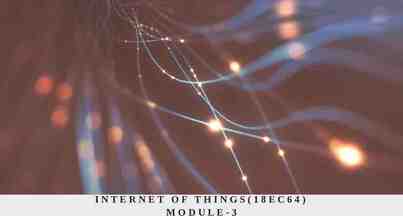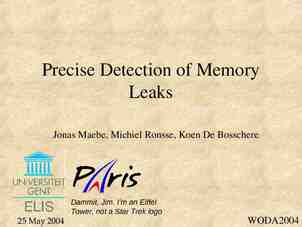Evaluating Training Programs The Four Levels Dr. Myron A. Eighmy Based
33 Slides269.00 KB
Evaluating Training Programs The Four Levels Dr. Myron A. Eighmy Based on the work of Dr. Donald L. Kirkpatrick, University of Wisconsin Madison 1 2007 Fall Extension Conference
Objectives Upon completion of this presentation you will be able to: – – – – 2 State why evaluation of programs is critical to you and your organization. Apply Kirkpatrick’s four levels of evaluation to your programs. Use guidelines for developing evaluations. Implement various forms and approaches to evaluation 2007 Fall Extension Conference
Why Evaluate? 3 Determine the effectiveness of the program design How the program was received by the participants How learners fared on assessment of their learning Determine what instructional strategies work presentation mode presentation methods. learning activities desired level of learning Program improvement 2007 Fall Extension Conference
Why Evaluate? 4 Should the program be continued? How do you justify your existence? How do you determine the return on investment for the program? human capital individual competence social/economic benefit 2007 Fall Extension Conference
Four Levels of Evaluation Kirkpatrick During – – Level One Level Two Post – – 5 program evaluation Reaction Learning program evaluation Level Three Level Four Behavior Results 2007 Fall Extension Conference
Reaction Level A – – – – – 6 customer satisfaction measure Were the participants pleased with the program Perception if they learned anything Likelihood of applying the content Effectiveness of particular strategies Effectiveness of the packaging of the course 2007 Fall Extension Conference
Examples of Level One Your Opinion, Please In a word, how would you describe this workshop? Intent – 7 Solicit feedback about the course. Can also assess whether respondents transposed the numeric scales. 2007 Fall Extension Conference
Example of Level One Using a number, how would you describe this program? (circle a number) Terrible 1 2 8 Average 3 4 Outstanding 5 Intent: Provides quantitative feedback to determine average responses (descriptive data). Watch scale sets! 2007 Fall Extension Conference
Example of Level One How much did you know about this subject before taking this workshop? Nothing 1 2 9 4 A lot 5 How much do you know about this subject after participating in this workshop? Nothing 1 2 Some 3 3 Some 4 A lot 5 Intent - The question does not assess actual learning, it assesses perceived learning. 2007 Fall Extension Conference
Example Level One How likely are you to use some or all of the skills taught in this workshop in your work/community/ family? Not Likely 1 10 Very 2 Likely 3 Likely 4 5 Intent – determine learners perceived relevance of the material. May correlate with the satisfaction learners feel. 2007 Fall Extension Conference
Example of Level One The best part of this program was The one thing that could be improved most . Intent Qualitative feedback on the course and help prioritize work in a revision. Develop themes on exercises, pace of course, etc. 11 2007 Fall Extension Conference
Guidelines for Evaluating Reaction 12 Decide what you want to find out. Design a form that will quantify reactions. Encourage written comments. Get 100% immediate response. Get honest responses. If desirable, get delayed reactions. Determine acceptable standards. Measure future reactions against the standard. 2007 Fall Extension Conference
Learning Level What did the participants learn in the program? – – – 13 The extent to which participants change attitudes, increase knowledge, and/or increase skill. What exactly did the participant learn and not learn? Pretest Posttest 2007 Fall Extension Conference
Learning Level Requires developing specific learning objectives to be evaluated. Learning measures should be objective and quantifiable. – 14 Paper pencil tests, performance on skills tests, simulations, role-plays, case study, etc. 2007 Fall Extension Conference
Level Two Examples 15 Develop a written exam based on the desired learning objectives. Use the exam as a pretest Provide participants with a worksheet/activity sheet that will allow for “tracking” during the session. Emphasize and repeat key learning points during the session. Use the pretest exam as a posttest exam. Compute the posttest-pretest gain on the exam. 2007 Fall Extension Conference
What makes a good test? The only valid test questions emerge from the objectives. Consider writing main objectives and supporting objectives. Test questions usually test supporting objectives. Ask more than one question on each objective. 16 2007 Fall Extension Conference
Level Two Strategies Consider using scenarios, case studies, sample project evaluations, etc, rather than test questions. Develop a rubric of desired responses. – 17 Develop between 3 and 10 questions or scenarios for each main objective. 2007 Fall Extension Conference
Level Two Strategies Provide instructor feedback during the learning activities. – – 18 Requires the instructor to actively monitor participants discussion, practice activities, and engagement. Provide learners feedback. Ask participants open ended questions (congruent with the learning objectives) during activities to test participant understanding. 2007 Fall Extension Conference
Example Which of the following should be considered when evaluating at the Reaction Level? (more than one answer possible) Evaluate only the lesson content Obtain both subjective and objective responses Get 100% response from participants Honest responses are important Only the course instructor should review results. 19 2007 Fall Extension Conference
Example Match the following to the choices below Reaction Level Learning Level A. Changes in performance at work B. Participant satisfaction C. Organizational Improvement D. What the participant learned in class 20 2007 Fall Extension Conference
Scenario Example An instructor would like to know the effectiveness of the course design and how much a participant has learned in a seminar. The instructor would like to achieve at least Level Two evaluation. – – 21 What techniques could the instructor use to achieve level two evaluation? Should the instructor also consider doing a level one evaluation? Why or why not? 2007 Fall Extension Conference
Rubric for Scenario Question Directions to instructor: Use the following topic checklist to determine the completeness of the participants response: Learner demonstrated an accurate understanding of what level two is: learning level. Learner provided at least two specific examples: pretest -posttest, performance rubrics, scenarios, case studies, hands-on practice. Learner demonstrated an accurate understanding of what level one evaluation is: reaction level. The learner provided at least three specific examples of why level one is valuable: assess satisfaction, learning activities, course packaging, learning strategies, likelihood of applying learning. 22 2007 Fall Extension Conference
Behavior Level How the training affects performance. The extent to which change in behavior occurred. Was the learning transferred from the classroom to the real world. Transfer – Transfer - Transfer 23 2007 Fall Extension Conference
Conditions Necessary to Change The – – – – 24 person must: have a desire to change. know what to do and how to do it. work in the right climate. be rewarded for changing. 2007 Fall Extension Conference
Types of Climates Preventing – forbidden to use the learning. Discouraging – changes in current way of doing things is not desired. Neutral – learning is ignored. Encouraging – receptive to applying new learning. Requiring – change in behavior is mandated. 25 2007 Fall Extension Conference
Guidelines for Evaluating Behavior Measure on a before/after basis Allow time for behavior change (adaptation) to take place Survey or interview one or more who are in the best position to see change. – – – – 26 The participant/learner The supervisor/mentor Subordinates or peers Others familiar with the participants actions. 2007 Fall Extension Conference
Guidelines for Evaluating Behavior Get – 100% response or a sample? Depends on size of group. The more the better. Repeat – at appropriate times Remember that other factors can influence behavior over time. Use a control group if practical Consider cost vs. benefits of the evaluation 27 2007 Fall Extension Conference
Level Three Examples Observation Survey – or Interview Participant and/or others Performance – – Before and after Control group Evidence 28 benchmarks or Portfolio 2007 Fall Extension Conference
Survey or Patterned Interview 1. Explain purpose of the survey/interview. 2. Review program objectives and content. 3. Ask the program participant to what extent performance was improved as a result of the program. Large extent Some extent Not at all If “Large extent” or “Some extent”, ask to please explain. 4. If “Not at all”, indicate why not: Program content wasn’t practical No opportunity to use what I learned My supervisor prevented or discouraged me to change Other higher priorities Other reason (please explain) 5. Ask, “In the future, to what extent do you plan to change your behavior?” Large extent Some extent Not at all Ask to please explain: 29 2007 Fall Extension Conference
Evidence and Portfolio Thank you for participating. I am very interested in how the evaluation skills you have learned are used in your work. . Please send me a copy of at least one of the following: – – – – 30 a level three evaluation that you have designed. a copy of level two evaluations that use more than one method of evaluating participant learning. a copy of a level one evaluation that you have modified and tell me how it influenced program improvement. (indicate if you would like my critique on any of the evaluations) If I do not hear from you before January 30, I will give you a call – no pressure – ‘just love to learn what you are doing. 2007 Fall Extension Conference
Results Level Impact of education and training on the organization or community. The final results that occurred as a result of training. The ROI for training. 31 2007 Fall Extension Conference
Examples of Level Four 32 How did the training save costs Did work output increase Was there a change in the quality of work Did the social condition improve Did the individual create an impact on the community Is there evidence that the organization or community has changed. 2007 Fall Extension Conference
Guidelines for Evaluating Results 33 Measure before and after Allow time for change to take place Repeat at appropriate times Use a control group if practical Consider cost vs. benefits of doing Level Four Remember, other factors can affect results Be satisfied with Evidence if Proof is not possible. 2007 Fall Extension Conference






































